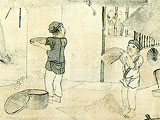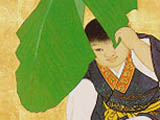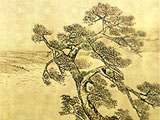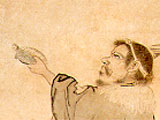|
|
| Description | HOME >Description |
| The spatial structure of Daijyo-ji expresses the Four Deva
kings on four sides as the guardians of the central 11-headed Kwannon. However,
rather than presenting actual statues of the Four Deva kings, the different
rooms metaphorically describe their natures by employing various themes
in the paintings. |
|||
| On the east of the 11-headed Kwannon is the "Agriculture Room," which signifies production and economy, the world governed by the Eastern Deva. | |||
  Jikoku-Ten who protects East.
Jikoku-Ten who protects East. |
|||
| Similarly, on the south, the "Basho Room" illustrates
Kakushigi, the politician, suggesting the world of politics governed by
the Southern Deva. |
|||
  Zocho-Ten who protects South.
Zocho-Ten who protects South. |
|||
| On the west, the "Landscape Room" illustrates a beautiful scene, which signifies the world of art and culture governed by the Western Deva. | |||
  Kohmoku-Ten who protects West.
Kohmoku-Ten who protects West. |
|||
| And on the north, the "Hermit Room" expresses the
otherworldly realm of eternal youth and longevity, suggesting the world
of life and medicine governed by the Northern Deva. |
|||
  Tamon-Ten who protects North.
Tamon-Ten who protects North. |
|||
| Furthermore, since the peacock is often associated with the Amida Buddha, the "Peacock Room" expresses the world of the Amida Buddha who appears as the topmost head of the 11-headed Kwannon. The Fusuma-e at Daijyo-ji thus expresses a three dimensional mandala, where the world of the Buddha is materialized. | |||
Previous Frame |
Next Frame |
||
|
Copyright ©Kameisan Daijyo-ji All rights reserved. |
|||